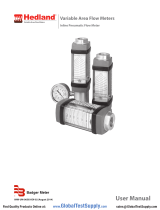AW Gear Meters AW-Lake User manual
- Category
- System management software
- Type
- User manual
AW Gear Meters AW-Lake are high-precision flow meters designed to accurately measure the flow rate of liquids and gases. With a measuring accuracy of ±2.0% of full scale and repeatability of ±1% of full scale, these meters provide reliable flow measurements for a wide range of applications. They are suitable for use in various industries, including chemical, petrochemical, food and beverage, and water treatment. AW Gear Meters AW-Lake are available in a variety of sizes and configurations to meet specific application requirements.
AW Gear Meters AW-Lake are high-precision flow meters designed to accurately measure the flow rate of liquids and gases. With a measuring accuracy of ±2.0% of full scale and repeatability of ±1% of full scale, these meters provide reliable flow measurements for a wide range of applications. They are suitable for use in various industries, including chemical, petrochemical, food and beverage, and water treatment. AW Gear Meters AW-Lake are available in a variety of sizes and configurations to meet specific application requirements.




















-
 1
1
-
 2
2
-
 3
3
-
 4
4
-
 5
5
-
 6
6
-
 7
7
-
 8
8
-
 9
9
-
 10
10
-
 11
11
-
 12
12
-
 13
13
-
 14
14
-
 15
15
-
 16
16
-
 17
17
-
 18
18
-
 19
19
-
 20
20
-
 21
21
-
 22
22
AW Gear Meters AW-Lake User manual
- Category
- System management software
- Type
- User manual
AW Gear Meters AW-Lake are high-precision flow meters designed to accurately measure the flow rate of liquids and gases. With a measuring accuracy of ±2.0% of full scale and repeatability of ±1% of full scale, these meters provide reliable flow measurements for a wide range of applications. They are suitable for use in various industries, including chemical, petrochemical, food and beverage, and water treatment. AW Gear Meters AW-Lake are available in a variety of sizes and configurations to meet specific application requirements.
Ask a question and I''ll find the answer in the document
Finding information in a document is now easier with AI
Related papers
Other documents
-
Omega FLMX-XXXXX Series Owner's manual
-
Dwyer Series HF User manual
-
Omega FL-6100-SS, FL-6300-SS, and FL-6700-SS Owner's manual
-
 Badger Meter Hedland T316 User manual
Badger Meter Hedland T316 User manual
-
Dwyer HFPC Series User manual
-
Omega FLC Series Owner's manual
-
Dwyer Series STFLO User manual
-
Omega FL2900, 6900, 7900, 8900 Owner's manual
-
Flowserve Valtek StarPac II Intelligent Control Systems User Instructions
-
Dwyer Series SSM User manual























